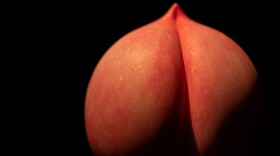

Thomas Edison said, “If we all did the things we are really capable of doing, we would literally astound ourselves....” For kids in the Connecticut Invention Convention program, now poised to expand through corporate grants, becoming inventors and entrepreneurs seems to be all in a day’s work.
On a beautiful Fall Saturday at the Talcott Mountain Science Center in Avon, teachers from Connecticut schools tinkered with gadgets at a teacher-training workshop, run by the Connecticut Invention Convention (CIC). Susan Prihar, a science teacher from Soloman Schechter Day School in West Hartford, said she’s learning to help students identify things that can be improved. “I think that there’s an intelligent and organized way to present that, so that kids can buy into it; because that’s really a hard part,” she explained. “It’s to present to students: You can change the world and have them believe it. And this program is fantastic to do that.”
Mallory Kievman, a tenth grader at Loomis Chaffee in Windsor, believes she can change the world by stopping one hiccup at a time. “I got them close to everyday,” she said. “So I got into researching the old wives tales and I came upon three that worked for me. Lollipop can help stop your hiccups: [it’s made with] apple cider, vinegar and sugar. So combining the three is pretty much what I did!” Kievman wants to file for approval from the U.S. Food and Drug Administration to sell her lollipop to patients on dialysis and to cancer patients suffering from hiccups, as a result of chemotherapy.
Like Kievman, third grader Ella Rogerson from East Haddam had a problem that required a solution. “I was at this restaurant that I had hot dogs,” she said. “And when I started eating the hot dog bun, the bottom of the bun broke in half, so the bun wouldn’t be like, secure anymore.” Ella’s brother Jack Rogerson, a seventh grader at Nathan Hale-Ray Middle School, had a creative idea. “This is the Round-A-Bun. It’s a tubular hot dog bun,” he explained. “The main thing about it is that it prevents bun tearing. It also prevents losing your toppings, getting them all over your clothes [and] your face.” Shaped like a tube, the bun is sealed on one end and is made by using standard plumbing supplies.
Students like Rogerson and Kievman say they couldn’t have done it without their teachers. Shannon Karlowicz teaches fifth grade at Seymour school in East Granby and it’s the third year she’s been with the CIC. “I think the most exciting piece is that it really does allow them to bring their own passions and their own interests into it,” she said. “So some children are inventing things that have to do with cooking and creating food or storing food and some people are creating things that have to do with sports or a specific interest they have outside of school.”
That’s exactly how Robertson Michaud became an inventor. His passion for drums led him to create a drumstick apparatus in fifth grade for the CIC annual competition. Then five years ago, coming up on his 30th birthday, he turned his other passion into a business, launching Michaud Pasta Sauce. The CIC program is expanding now from a Northeast Utilities Foundation grant of $225,000 and a matching grant from Stanley Black & Decker. And Michaud is setting up an after-school club for children in Simsbury. He said, “One of the aspects that the invention convention provides is allowing the children to speak publicly, and give almost a sort of a sales pitch about their invention, which really applies to what I have to do on an almost daily basis with my product line today. So it gives them a lot more than just inventing.”
Also, teachers said children with special needs come up with the most creative solutions. “It’s often not the smartest kid in the class. It’s not the kids that have the highest IQ. It’s kids with special needs,” said Jim Griffin, who teaches grades 2-5 at Somers Public Schools. “So [they’re] genius not in IQ, but you see it in the gift of being able to work with their hands and having an idea.”
The grants will help CIC to reach out to 200 schools, from nearly 135 currently. Demetrios Giannaros, CIC board member and an economist, said the 10,000 children participating in the invention convention are Connecticut’s future. “In order for us to continue to be the number one per capita income state in the country and perhaps one of the top in the world, we have to create new products [and] new ideas,” he pointed out.
Now in its 31st year, CIC has helped create patent-holding inventors and entrepreneurs who started young. For more information about the program and how to participate, visit ctinventionconvention.org.








